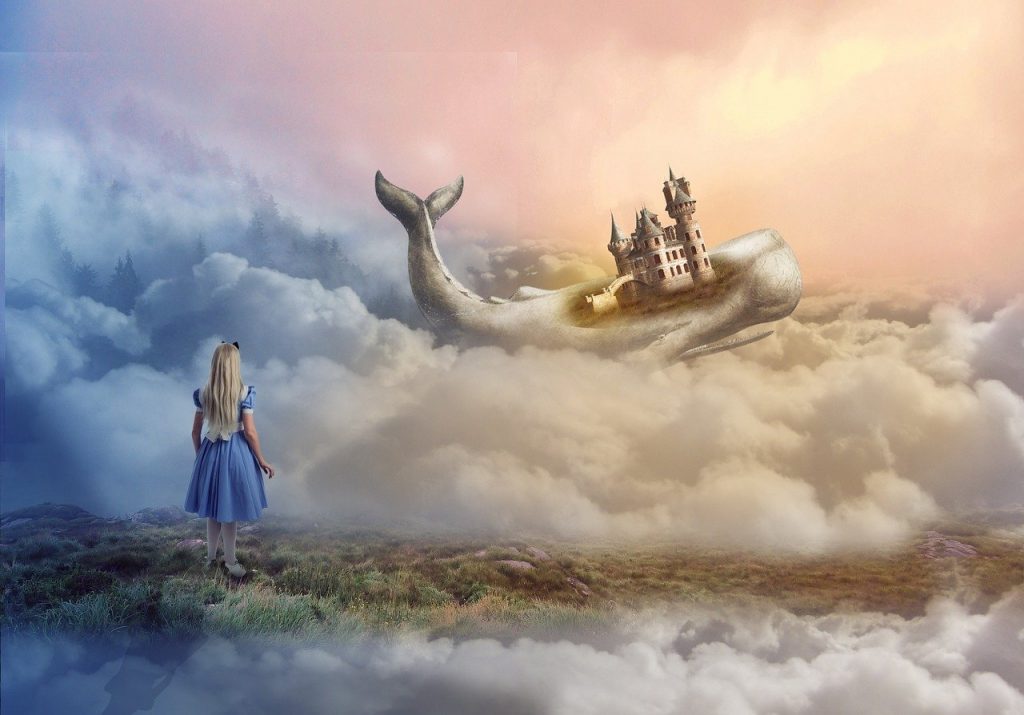Dream Host Self-image

Occult Lore
Author Keith Baker, Adam Bank, Chris Jones, Scott Reeves, and Elton Robb
Series Lore
Publisher Atlas
Publish date 2002
A self-image is the incarnation of the dreamer within his dream. Most of the time, it will take on the physical form of the dreamer, but this is not always the case; a man might dream about being a woman, a dwarf might fantasize about being an elf, and a goblin could imagine he was a bicycle.
Still, these are the rare exceptions as opposed to the rule. In all cases, the Lucid Dreaming Study Dream Host action will allow a character to sense the true nature of a self-image even if it does not have the appearance of the host dreamer.
An important issue when facing a self-image is whether the host dreamer is aware of his dream or not. If he is a trained lucid dreamer, the dream host may recognize threats and can use his Lucid Dreaming skill to defend himself. If he is simply a passive dreamer, he will respond to danger much as he would in the real world. Reality may still shift around him, but these changes will not be as directed as they would be in the hands of a trained oneiromancer.
A ‘dream host self-image’ is a template that can be added to any entity with an Intelligence score of 2 or more. It uses all of the base creature’s statistics and special abilities except as noted here. A dream self-image can only be encountered in the dreams of the base creature.
Hit Dice: Increase to d12
Special Qualities: A dream host self-image possesses all of the special qualities of the base creature, plus those listed below:
Dream Points (Ex): A dream host self-image has access to an infinite supply of dream points. The dream is his personal playground, and he will never run out of energy. If the dreamer is aware inside of the dream and possesses ranks in Lucid Dreaming, he can direct these energies himself. He may expend a number of dream points equal to six + his ranks in Lucid Dreaming each turn, and all of his Lucid Dreaming actions are automatically successful. If the dreamer has no ranks of Lucid Dreaming, his self-image may still expend six dream points per turn to gain the benefit of any of the Lucid Dreaming actions, and these actions will always succeed – again, no skill check is required.
However, the untrained dreamer does not consciously direct these points; they just happen, generally in ways that will benefit the dreamer. An attacker might find that she is surprisingly clumsy (due to Modify Chance affecting her chance to hit), or the dreamer self-image might find that he is fighting unusually well, or that spell-like effects just occur around him.
The net result is that while the self-image generally has the same statistics as the base creature, at any given time one or more of those statistics will be elevated. It will be harder to hit, or faster, or more dangerous that opponents will be expecting. A fighter‘s self-image may suddenly start flying or shoot fireballs at his foes.
Fast Healing (Ex): If a dreamer’s self-image is not killed quickly, it will tend to ‘forget’ that it was injured; wounds will simply fade away when no one is looking at them. Even the dreamer himself won’t really notice the healing; it just happens in the background. A self-image recovers 5 hit points each round. This will not allow the creature to regenerate lost limbs, nor prevent it from being killed. This will also not restore damage caused by an oneiric bolt spell.
Spell Resistance (Ex): When a character attempts to perform magic within a dream, she is using her mind to try to alter the dream scenario. The dream host will unconsciously resist any such change, asserting its own vision of reality. As a result, self-image has a Spell Resistance value equal to 5 + the base creature’s hit dice or character levels.
Saves: Add +2 to all of the saving throws of the base creature
Climate/Terrain: The dreams of the base creature.
Organization: Solitary
Challenge Rating: Same as base creature +2
Treasure: None.

 Buy me a coffee
Buy me a coffee